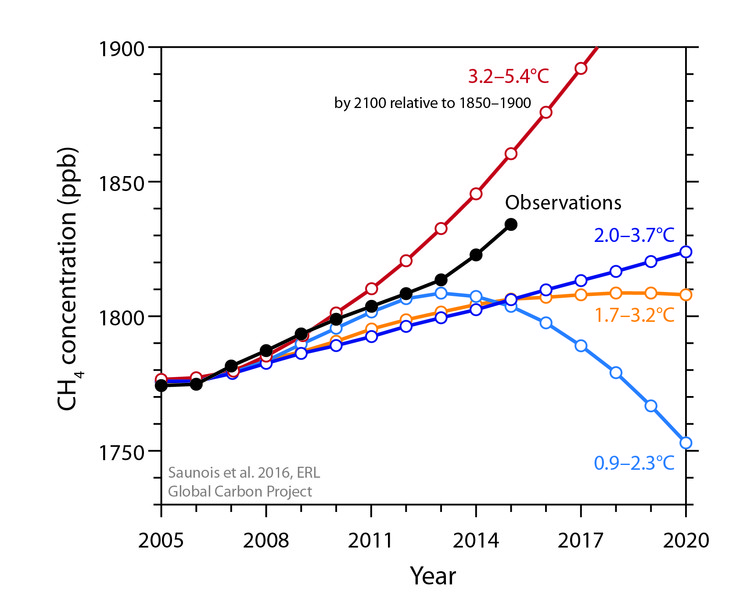
Methane concentration pathways from IPCC and observations from the NOAA measuring network (Saunois et al 2016, Environmental Research Letters). The projected global warming range by the year 2100, relative to 1850-1900, is shown for each pathway. | Methane concentrations in the atmosphere are growing faster than any time in the past 20 years. The increase is largely driven by the growth in food production, according to the Global Methane Budget released today. Methane is contributing less to global warming than carbon dioxide (CO2), but it is a very powerful greenhouse gas. Since 2014, methane concentrations in the atmosphere have begun to track the most carbon-intensive pathways developed for the 21st century by the Intergovernmental Panel on Climate Change (IPCC). The growth of methane emissions from human activities comes at a time when CO2 emissions from burning fossil fuels have stalled over the past three years. If these trends continue, methane growth could become a dangerous climate wildcard, overwhelming efforts to reduce CO2 in the short term. |